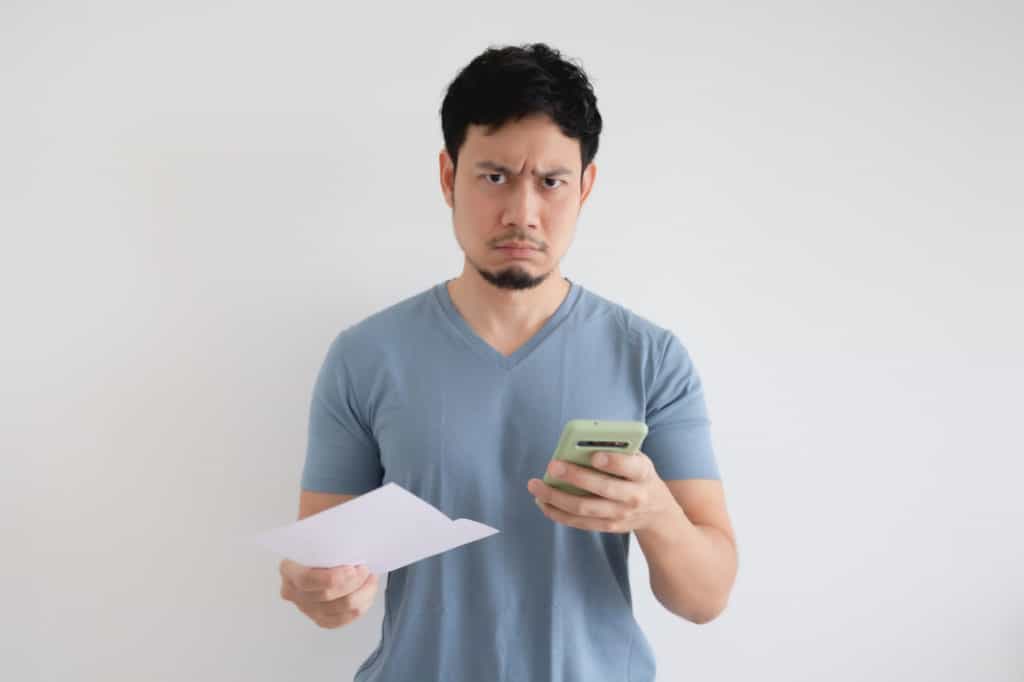With all the tech terms used in marketing cellular services, it gets confusing when you might run up a mobile bill. Two words: USB Tethering and Hotspot Data, cause their share of misunderstanding. For example, readers have asked: does USB tethering use hotspot data from your mobile internet plan?
USB tethering allows sharing the mobile device's Internet connection with a computer or other device via a USB cable. All Internet traffic from the computer passes through the mobile device. As a result, the data is taken from the mobile Internet plan and will impact the hotspot data allowance.
When it comes to sharing your phone's Internet with other devices, there are two options: USB tethering and creating a wireless mobile hotspot. Let's break it down. First, what is tethering? And how does USB tethering differ from using a wireless hotspot?

What is Tethering?
Have you ever been in this situation: You're using your smartphone, and its mobile data plan when you need to also connect to another device like a laptop?
This is where tethering comes in. Tethering is sharing your smartphone's Internet connection with other devices. This allows you to use your phone's mobile data plan on your laptop, tablet, or any other device that requires an Internet connection.
There are two common methods of tethering:
Wired hotspot using USB tethering
Wireless hotspot using Wi-Fi or Bluetooth
USB tethering involves plugging a smartphone into the USB port on another device, like a laptop, to use the phone's mobile data connection to access the internet. With a wireless hotspot, you create a Wi-Fi network with your phone to which other devices can connect.
When tethering, the tech and marketing guys will tell you that your phone acts as a portable, mobile, or WiFi hotspot.
Also, remember that computers usually require more data when sharing your phone’s data than mobile tasks. Hence will consume a sizeable amount of your data plan.
USB Tethering Has Other Uses That Won’t Use Hotspot Data
Yes, USB tethering does consume your hotspot data when used for internet sharing. So, Sending emails, uploading photos to social media, and streaming begin to use your mobile hotspot's capacity.
But it also has other uses that won't consume your hotspot data.
The following tasks done using USB tethering will not use mobile hotspot data:
Transferring media files between the two devices.
For mobile app developers, USB tethering hotspot or debugging does not directly use your data plan’s quota.
Charging your phone from your laptop
Software Updates
Moving on to the side-by-side comparison between a USB tethering hotspot and a wirelessly created hotspot.
USB Tethering Vs. Hotspot
USB Tethering and Mobile Hotspots are both ways to share the Internet connection of a mobile device with other devices. However, there are some key differences between the two:
Connection Method: USB Tethering is achieved by connecting the mobile device to a computer via a USB cable. On the other hand, Mobile Hotspot creates a Wi-Fi network that other devices can connect to wirelessly.
Speed: The speed of the Internet connection depends on the mobile device and the network it is connected to. However, as a general rule, USB Tethering is faster than Mobile hotspots because it has a direct connection to the computer. At the same time, the Mobile Hotspot's speed is limited by the mobile device's Wi-Fi hardware capabilities.
Power Consumption: When using USB Tethering, the mobile device is usually charged by the computer it is connected to. When using a Mobile Hotspot, the mobile device has to work harder to maintain the Wi-Fi network, which can result in faster battery drain.
Security: With USB Tethering, the connection is only accessible by the computer it is connected to, making it more secure. Mobile Hotspot creates Wi-Fi network access to any device within range, which can be less secure.
Benefits and Drawbacks of USB Tethering
There are pros and cons when comparing USB tethering to wireless hotspot use.
Battery Life
Wireless tethering methods like WiFi and Bluetooth can consume much of your mobile phone's battery life. With USB tethering, you can enjoy having your mobile phone charge while plugged into the laptop. Hence, there is no battery drainage for your smartphone.
Do you know which phone brand has the best battery life? I took a look at everything you know about smartphone battery life.
Only One-To-One Connection
Regardless if you use an Android smartphone or iPhone, your device likely has only one USB or lightning port. Having only a single port means that a USB tether can only serve an internet connection to one device.
On the other hand, setting up your smartphone as a WiFi hotspot allows you to share mobile data without a dedicated hotspot device. You can connect multiple nearby devices by creating a wireless network.
The more internet is pulled through this configuration, the faster your battery will drain. Be sure to plug it in.
Some Requirements Affect Convenience
We often see a wireless connection as convenient because it gives you flexibility and eliminates the hassle of wires. To use a USB tether, you will need a cable. While it's only a single cable and maybe no hassle to some people, others may feel differently.
Faster Internet Speed
For file transfers, USB tethering provides a faster connection between two devices. WiFi does a decent job, with Bluetooth tethering being the slowest of the three linking methods.
Speaking of Bluetooth: Did you know that you can connect multiple Bluetooth devices at the same time?
Regarding internet connectivity, a USB connection is slightly faster because the data link is less prone to interference. But often, a slow cellular internet connection is the bottleneck. You can choose either USB or WiFi at your convenience.

How to Save Mobile Data Usage When Tethering Your Tablet or Smartphone
Mac and Windows laptops tend to be data-hungry. They're designed to be connected to a terrestrial Internet connection. You'll be consuming your data plan when you are working on the go and tethered. We'll want to figure out how to save as much mobile data usage as possible.
Thankfully, it's simple, regardless of your mobile carrier.
The best way to save mobile data is to configure your laptop to use a metered connection.
Setting your computer to a metered connection tells the operating system to go easy on your data. It directs the OS to limit some features and background tasks to use the internet connection sparingly.
Here's how to set your Windows PC to a metered connection
Connect your laptop to your iPhone or Android phone via a USB cable, WiFi hotspot, or Bluetooth connection.
Go to Settings.
In the Network section and locate the currently connected active network.
Scroll below and find "metered connection."
You may need to tap the active network to access advanced settings before finding the "metered connection."
Toggle this setting to the on position.
Unfortunately, for Mac OSX laptops, there's no inbuilt setting to limit the operating system's data use. Mac users will need to employ a third-party app. Here are some of the solutions to check out:
LittleSnitch: Makes Internet connections visible and puts you back in control!
Radio Silence - See all network connections - block any app from going online.
TripMode: Easily control your Mac's data usage on slow or expensive networks. Stop wasting money on limited data plans.
In this video (4m50s@2x) RightlyTV gives us a walk-through of TripMode.
Once connected, it's a good idea to carefully consider each task and limit what you do with the internet connection. Consider waiting to binge-watch Netflix or YouTube with this setup. These services assume that they can serve you full-sized content since you're watching using a laptop.
In my earlier article, I detailed when you should turn off mobile data on your smartphone to save you money. 💸
Carriers Hate When You Tether...Sometimes
Tethering can be convenient when you need that urgent connection. Still, it's essential to know that most mobile carriers dislike tethering.
Data tethering is annoying to carriers for a few reasons:
It violates terms of use at times based on the subscriber's data plan.
Uninformed users consume mobile bandwidth on data-hungry laptop tasks.
Subscribers are not paying for all their connected devices using mobile internet.
At a minimum, tethering may cause data overage fees. In severe cases, it can attract fines from your carrier.
The good news is that since tethering is quite common, most carriers now accommodate subscribers with data plans that support the USB tethering option. Go ahead! Connect your computer or iPad, or use your smartphone as a portable WiFi hotspot to share your mobile network connection. Just keep in mind what tasks you're doing on the go.

Is USB Tethering Safe?
Tethering via a wired connection is more secure as both devices are connected through short cables.
Though Spanish cybersecurity experts have shown how it is possible to attack a 3G-connected device; however, with 5G replacing the older mobile data standards, this thread has largely been mitigated.
Connections through a wireless hotspot, on the other hand, can be intercepted using WiFi sniffers. That is why it is advisable to set a unique password and use robust security protocols such as WPA3.
Also, as mentioned earlier, batteries have a maximum number of charge and discharge cycles. When your phone is tethered through USB, the battery charges, and the more times you charge (tether), the more you reduce its lifespan.
Does Tethering Use More Data?
Does a WiFi hotspot use more data than normal? No, not at all. Tethering is more efficient because it utilizes fewer data than hotspots. Also, data usage is related to what you are doing online. To give you an idea of how much data you might be using, here is a table showing some activities and the amount of data they use.
| Activity | Data per 30 min | Data per hour |
|---|---|---|
| Web browsing | Approx. 30MB | Approx. 60MB |
| Less than 1MB | Less than 1MB | |
| Streaming music | Up to 75MB | Up to 150MB |
| Netflix | From 125MB | From 250MB |
| Approx. 40MB | Approx. 80MB | |
| YouTube | Approx. 150MB | Approx. 300MB |
| Approx. 360MB | Approx. 720MB | |
| Zoom (High-quality group call) | Approx. 405MB | Approx. 810MB |
sluiceartfair.com & dabuh.com
Is there anything that can be done to reduce data usage? Yes. If you're tethering modern Android devices (Android 4.1+), such as a tablet, to a smartphone, the devices will figure out issues automatically and take care of data usage so that you don't use more than your data allotment plan.
You can also limit how much data can be used so that your device does not use more than what you specifically allow.
For example, Windows can help you stay below a certain data limit by looking for ways to minimize data usage. Set the limit, and the system will notify you when you almost reach it.
To do this, follow the following steps.
Head to the Start button and select Settings > Network & Internet > Status.
Below the network that you are using, choose Data usage.
Below Choose a network; choose the one to which you want to set a limit.
Enter the limit and any other information, and then Save.
If you have more questions about using mobile data, check out the articles below.